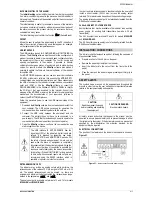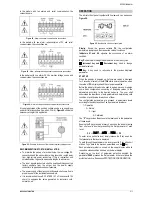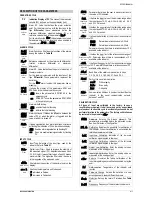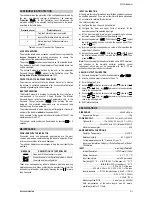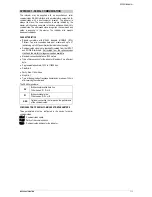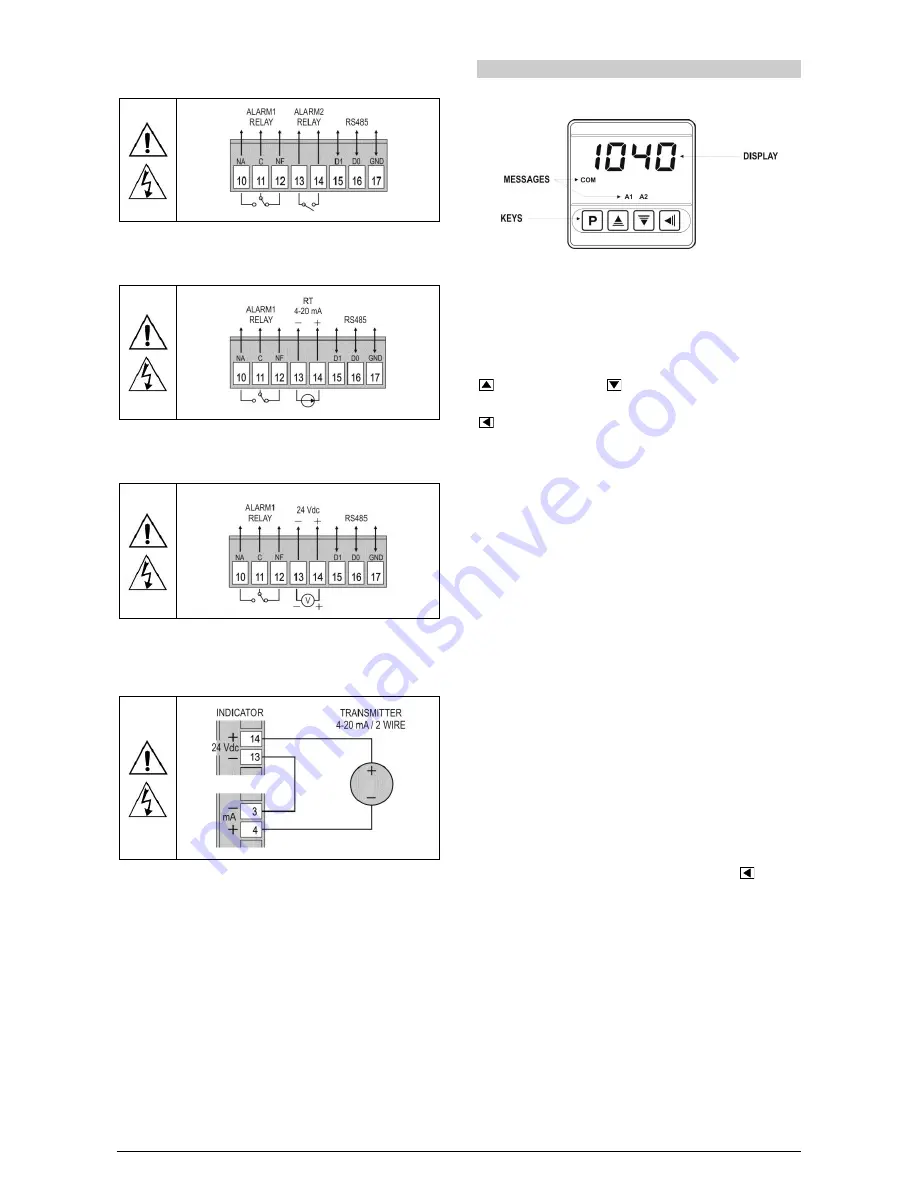
N1040i Indicator
NOVUS AUTOMATION
3/7
In the models with two alarms and serial communication, the
connections are:
Figure 02
- Alarms and serial communication connections
In the models with one alarm, retransmission of PV and serial
communication, the connections are:
Figure 03
- Alarm, retransmission and serial communication connections
In the models with one alarm, 24 Vdc auxiliary voltage source and
communication, the connections are:
Figure 04
- Alarm, auxiliary source and communication connections
A typical application of the auxiliary voltage source is to supply loop
power for field transmitters (two-wire 4-20 mA).
Figure 05
shows the
necessary wiring for this application.
Figure 05
– Example for the use of the indicator auxiliary voltage source
RECOMMENDATIONS FOR THE INSTALLATION
To minimize the pick-up of electrical noise, the low voltage DC
connections and the sensor input wiring should be routed away
from high-current power conductors. If this is impractical, use
shielded cables. In general, keep cable lengths to a minimum.
The input signals conductors shall be positioned throughout the
factory separate from the output and the power supply
conductors, in grounded conduits if possible.
The power supply of the electronic instruments shall come from a
proper source for the instrumentation network.
It is recommended to use RC FILTERS (0.1 uF in series with 100
ohms) to suppress the noise generated by contactors coils,
solenoids, etc.
OPERATION
The indicator front panel, together with its elements, can be seen on
Figure 06
:
Figure 06
- Identification of the front panel parts
Display
: Shows the process variable
PV
, the configuration
parameters prompts and their respective values/ conditions.
Indicators A1 and A2
: signalize the occurrence of an alarm
condition.
Key P
: used to walk through the parameters in the menu cycles.
Increment key and
Decrement key
: Used to change
parameter values.
Key:
A key used to retrocede to the previous displayed
parameter.
START UP
When the indicator is powered up, its firmware version is displayed
for 3 seconds, after which the
N1540
starts normal operation, when
the value of
PV
is displayed and the outputs are enabled.
Before the indicator is ready to be used in a given process, it requires
some basic configuration, consisting of assigning values to the
parameters according to the desired behavior. The user shall
understand the importance of each parameter and determine a valid
condition or a valid value for each one of them.
The configuration parameters are grouped in parameters levels
according to their functionalities. The 4 parameters levels are:
1 – Operation
2 – Alarms
3 – Input
4 – Calibration
The
“P”
key provides the access to the levels and to the parameters
of these levels.
Keeping the
P
key pressed, at every 2 seconds, the indicator jumps
from one level to another, presenting the first parameter of each
level:
PV
>>
fva1
>>
type
>>
pass
>>
PV
…
To enter into a particular level, simply release the
P
key when the
first parameter in that level is displayed.
To walk through the parameters in a level, press the P key with short
strokes. To go back to the previous parameters, use the
Key.
Each parameter symbol is shown on the upper display while its
respective value/condition is shown on the lower display.
Depending on the level of parameter protection adopted, the
parameter
PASS
precedes the first parameter in the level where the
protection is active. See section PROTECTION CONFIGURATION.


